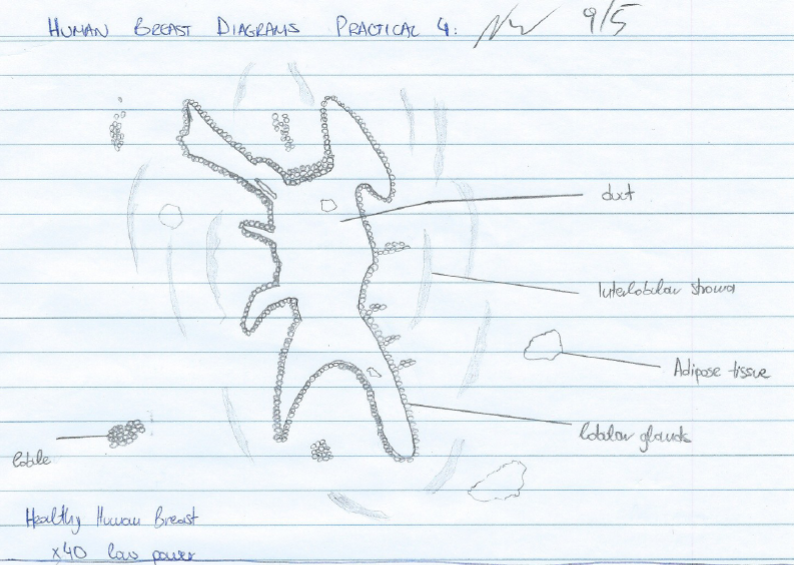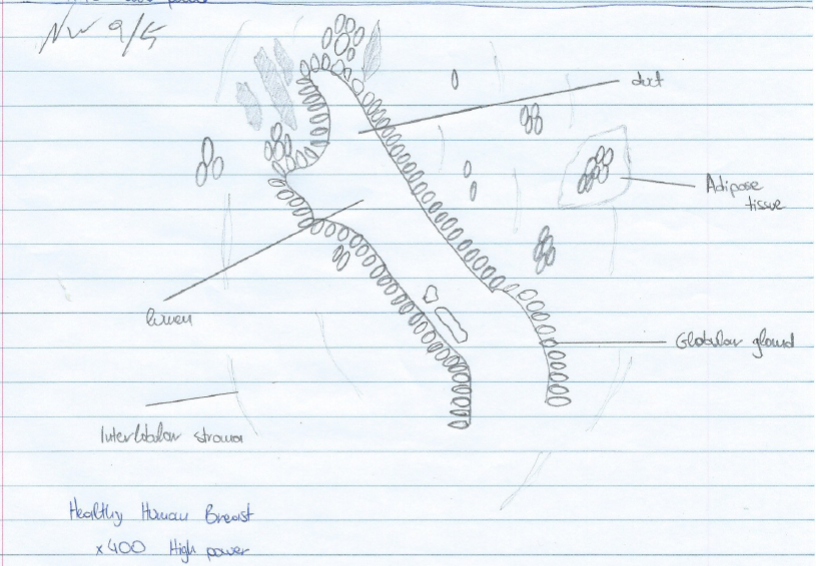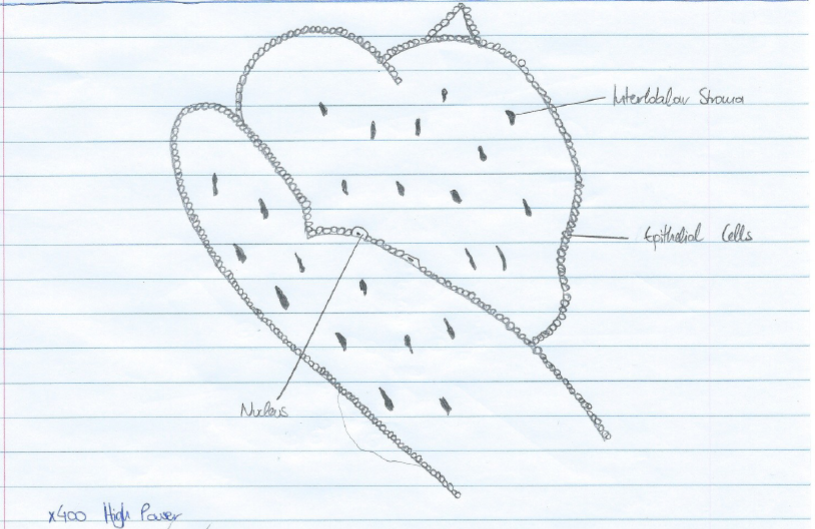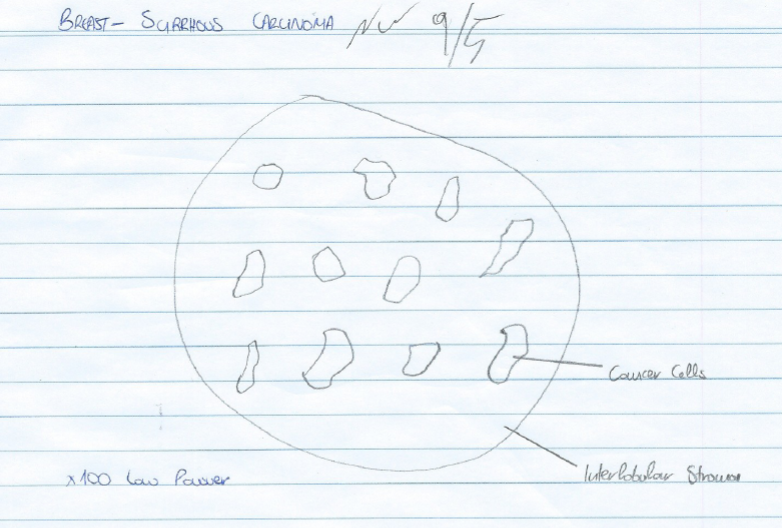Introduction
Histopathology is the study of human body tissues with the aim of assessing disease manifestations. With regard to clinical applications, the term could be used to refer to the assessment of processed surgical specimen by a pathologist (Young, Woodford & O’Dowd 2013; Sitter, Sonnewald, Spraul, Fjösne & Gribbestad 2002). The subject is a very important area of study in medicine because it helps to determine the cellular events and/or molecules that are involved in disease. In healthy states, tissues assume specific morphologies and colours. However, in disease states, the same tissues appear differently in terms of colour and shape (Bancroft & Gamble 2008). Thus, the study of the appearances of tissues in patients could greatly help clinicians to determine the possible causes of disease and the right medications that could be utilised in treating diseases. One of the most basic tools in histopathology is the microscope, which is used to magnify a tissue under investigation to visualise the finer details that could help in the determination of colour and shape (Bancroft & Gamble 2008; Cheesbrough, 2006).
In order to prepare a tissue for examination, several steps are followed. Tissue harvesting involves the removal of a portion of a tissue from the body. However, to prevent distortion of the tissue portion, it is preserved through the application of certain chemicals. Fixation process encompasses putting a tissue portion on a microscopic slide that could be viewed under the microscope. Fixation could be done in two ways. One way is fixing a tissue on a slide using chemicals such as formalin. Another way could be the use of freezing materials to ensure that a tissue sticks onto a slide. However, before a tissue is freeze fixed, it is subjected to a cryo-protectant such as TBS to maintain cell structure and morphology. Once tissues are fixed, they are then mounted on a surface that could support sectioning. Tissue sectioning is done via the use of a very sharp known as a microtome. Thin tissue sections are then placed on slides and staining chemicals are applied to make some tissue components achieve specific colours. In this experiment, human breast tissues were prepared and processed for histopathological viewing under the microscope (Bancroft & Gamble 2008).
Aims of the experiment
The experiment aimed at achieving three key objectives. First, it aimed at viewing sections of tissues both in normal and disease states. Tissue sections differ significantly in healthy and disease states. Therefore, it was expected that a tissue from a patient with a disease would appear quite different from a tissue from a healthy person. Second, the study focused on drawing sections of healthy and disease tissues. In fact, drawings of tissues are primarily utilised to show the essential features that are common in physiologically healthy tissue sections and abnormal tissue portions. Such drawings could capture the size of tissue components and their colours, which would be used to ascertain the status of a tissue. Third, the experiment concentrated on describing the features of the abnormal tissues as seen under the microscope. It was important to relate the observed characteristics seen under the microscope to those that are contained in books and other reference materials. Variations in morphological states could be applied to give conclusions with regard to the type of tissue damage, which could be attributed to a certain disease. It is worth noting that the tissue studied in the experiment was obtained from human breast.
Methods
All the methods used in the experiment focused on viewing pre-prepared slides of normal and abnormal tissues that were characterised by disease. H & E staining was utilised to stain the tissues used in the experiment. It was used because it is the most widely applied method of staining that gives excellent results with regard to visualisation of the morphology of tissues. The stained tissues had to show the following features in order to be accepted for viewing and making inferences: deep pink fibrin, orange and/or red RBCs, deep pinky red muscle fibres, cytoplasm with shades of pink colour, and blue-black nuclei. The microscopic examination that was adopted in the study involved three main steps. First, the slide was observed with the naked eye to note the kind of structures. The features of tissue structures noted in this step included the following: glandular structures, shape of the tissue, tissue layers, protrusions, ducts, and areas of dark and light staining. It is also noted whether a tissue section is cross-sectional or longitudinal section. After the observation with the naked eye, the slide could be viewed under the microscope using a low power magnification lens. The appearance of the tissue was drawn, showing the essential features such as the shape of cells. The third step that was adopted involved high power microscopic examination (100x to 400x magnification). The magnification enabled observers to capture more details of the tissues. Based on the details attained, a magnification that best showed the pathology at a cellular level was used. A high power diagram of the tissue was drawn. Structures were labelled and other features that represented disease were also noted.
How the diagrams were prepared
Breast tissue
Normal breast tissue
A normal breast tissue was viewed using a low power magnification lens and labelling done as required. A high power magnification was also done and labelling done.
Breast disease
Lobular hyperplasia
The skin tissue with lobular hyperplasia was observed using a low power magnification lens. A detailed labelling approach was adopted to identify all the relevant components as seen under the microscope.
Fibroadenoma
A breast tissue characterised by fibroadenoma was viewed using low magnification and labelling was done.
Scirrhous carcinoma
Both high power and low power diagrams were prepared in this section and the right labelling was adopted.
Answers to all the questions contained in the experiment were provided in a different part of this report.
Results and discussion
Diagrams of normal tissues

In a healthy breast tissue, all features look morphologically normal. The lobular glands seem extended to form protrusions from the main body of the tissue, which form the duct. The adipose tissue is far from the duct while the interlobular stroma is near the centre of the breast tissue (Silverthorn, Ober, Garrison & Silverthorn 2009).

The lumen of the breast looks elongated and it is surrounded by globular glands, which are essential in secreting important chemicals for the normal functions of the breast.

The figure 3 above looks clearer than that observed under low power magnification. More cells are visible in the diagram. Proteins in the cells are shown. In addition, the cells nuclei are indicated.
Breast disease

Unlike in a normal tissue, interlobular stroma is abnormally big while there is abnormal number of acini around the stroma. The changes are due to cellular events of tumour.

The cell nuclei are viable and the stroma appears spread throughout the breast tissue. It is worth noting the epithelial cells that surround the lobule, which is not exactly the same orientation that is found in a normal tissue. The changes are due to cellular events of tumour.

In the above figure, cancer cells appear throughout the breast tissue and they appear abnormal in shape. This is unlike in normal tissue where cells assume normal shape and size. The changes are due to cellular events of tumour

The high power magnification shows that the breast tissue has numerous cell nuclei that are contained within cancer cells. Unlike in a normal tissue, the cells appear abnormal in shape. The changes are due to cellular events of tumour
References
Bancroft, JD, & Gamble, M, Eds, 2008, Theory and practice of histological techniques. Elsevier Health Sciences, Amsterdam, Netherlands.
Cheesbrough, M, 2006, District laboratory practice in tropical countries, Cambridge university press, Cambridge, United Kingdom.
Silverthorn, DU, Ober, WC, Garrison, CW, & Silverthorn, AC, 2009, Human physiology: an integrated approach. Pearson/Benjamin Cummings, Upper Saddle River, NJ.
Sitter, B, Sonnewald, U, Spraul, M, Fjösne, HE, & Gribbestad, IS, 2002, ‘High‐resolution magic angle spinning MRS of breast cancer tissue,’ NMR in Biomedicine, vol. 15, no. 5, pp. 327-337.
Young, B, Woodford, P, & O’Dowd, G, 2013, Wheater’s functional histology: a text and colour atla, Elsevier Health Sciences, Amsterdam, Netherlands.